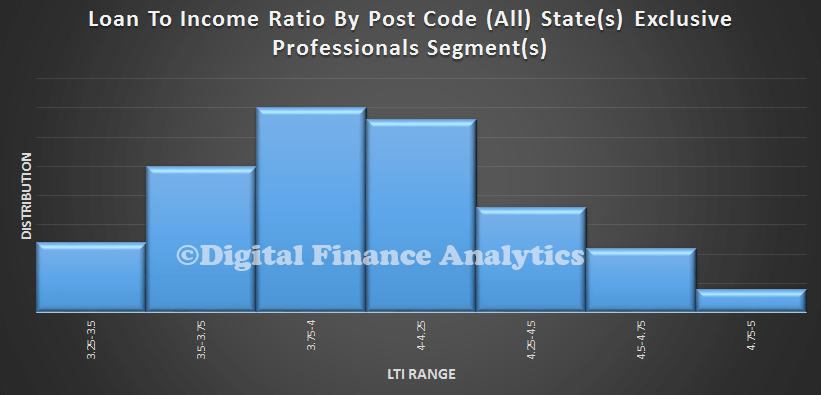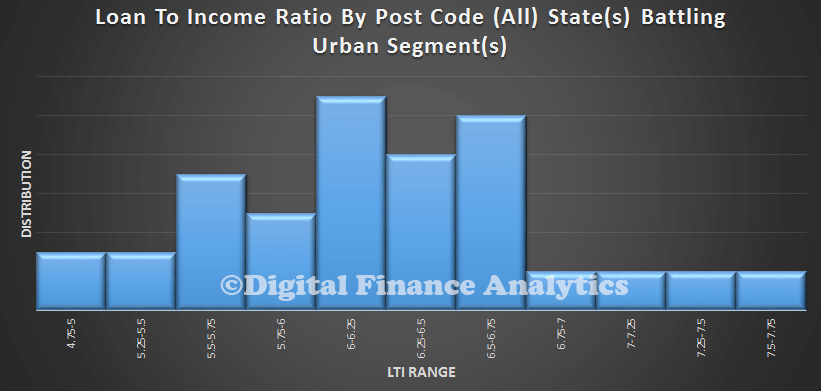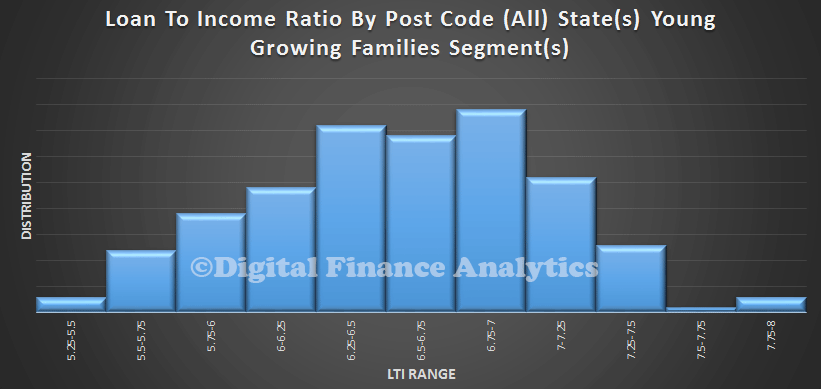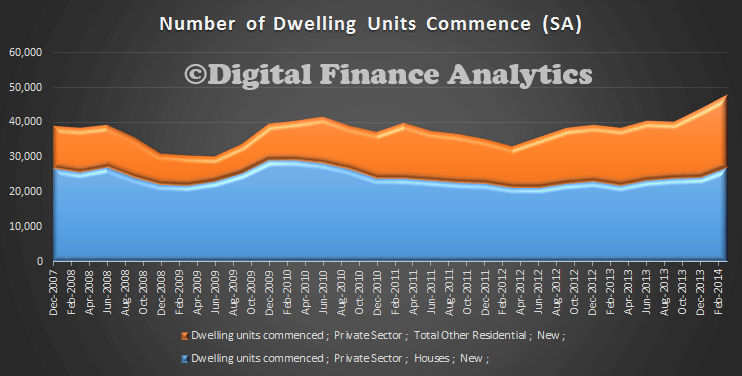The FSI Interim report, released earlier in the week, includes a section on how technology may disrupt payments, a critical domain in financial services.
The report says ” Advances in technology have reduced traditional barriers to market entry in payments, such as the need to construct a dedicated network. New entrants can leverage high levels of internet connectivity, penetration of smart devices and pre-existing networks to connect users to payments services more easily and cheaply than incumbents. The payment hub, being developed by eftpos Payments Australia Limited, and the New Payments Platform (NPP), an industry project being developed as a result of the Reserve Bank of Australia’s (RBA’s) strategic innovation review, may further reduce barriers to entry and drive competition. Incumbents in the Australian payments industry are facing competitive challenges from new market entrants, such as PayPal, POLi, PayMate and Stripe. Closed-loop pre-paid systems operated by companies outside the financial sector, such as Apple, Skype and Starbucks, are holding growing amounts of customers’ funds. Apple has also recently signalled its interest in mobile payments more broadly and recently developed fingerprint biometric authentication for its phones. Advances in cryptography and computer processing power have facilitated the development of virtual or crypto-currencies.
Today we look at the potential convergence of new payment mechanism, overlaid on smart devices, and in the context of customer centric thinking. Consider this, the ubiquitous smart mobile device is essentially a mobile wallet plus a payment instrument, a centre of interaction and potentially can provide secure identification.
You walk down a high street and receive a personalised messages from a retailer, based on your profile, as you pass. The offer is triggered by your proximity to the store. It is a deep discount on that item you were goggling last night, available for just 10 minutes. You decide to accept the offer, pay direct from your phone using your secure wallet, and the deal is done. Rather than collect it, you choose to have it delivered to your home, later in the day. No human interaction, simply a combination of technologies to fundamentally change the customer experience.
Consider the disruptive impact of this, on the retail trade, the payments system, and human behaviour.
Is this far fetched? Not at all. For example, Apple has been working on iBeacon, which is “a new technology that extends Location Services in iOS. Your iOS device can alert apps when you approach or leave a location with an iBeacon. In addition to monitoring location, an app can estimate your proximity to an iBeacon (for example, a display or checkout counter in a retail store). Instead of using latitude and longitude to define the location, iBeacon uses a Bluetooth low energy signal, which iOS devices detect”. It is still early, but Apple has been testing it since December last year in its US retail stores. In the UK, Virgin Atlantic is also conducting trial of iBeacon at Heathrow airport, so that passengers heading towards the security checkpoint will find their phone automatically pulling up their mobile boarding pass ready for inspection. Paypay is experimenting with its own version of beacon – “hands Free shopping – the future in here”, they say.
In May, St. George revealed that is trialling iBeacon at three Sydney branches. When a customer walks into the bank, the iBeacon senses the person’s entrance and sends a welcome message and personalised information directly to the iPhone or iPad, according to Computerworld. George Frazis, CEO of St. George Banking Group, said in a statement the launch of the new technology forms part of an increased focus on delivering an innovative and customer-centric in-branch experience. “The future of business will be in the ability to anticipate customer’s needs, understand what matters to them and act on that knowledge to surprise and delight them,” he said. “Our investment in iBeacon will help us to achieve that — and it has the potential to dramatically change the service experience in Australian banking.”
The question is, what is the right regulatory settings to, on one hand allow innovations like this to flourish, whilst on the other hand, ensure that adequate protections are in place. That is the question posed, but not yet answered in the FSI interim report.
“Some submissions argue that firms performing similar functions should be regulated in the same way. This position is often made by large incumbent players concerned about the capacity of new players to operate around the edge of the regulatory perimeter. Failure to apply equivalent regulation may result in an uneven playing field and regulatory arbitrage. It may also incentivise those within the current regulatory perimeter to lower their own standards of compliance to compete. However, applying the full weight of prudential or conduct regulation to small players and new start-ups, regardless of the materiality of the risk they represent, may stifle valuable innovation unnecessarily.”
What is clear to me, based on our survey of households and their use of mobile devices, there is potentially a revolution round the corner, which will disrupt traditional payment mechanisms, retail behaviour and customer expectations. Actually many people are ahead of many of the incumbents, and are expecting to do ever more with their ubiquitous mobile devices. The real power is wedding the multiple technologies contained in the device, to create a seamless consumer experience, with smart analytics and segment data. The marketeers dream of one to one targetting is here. Unless people to select to opt out – if they can find the right tab. That may not be easy.
 You can compare this mapping with the mortgage stress analysis for Melbourne, as there are some significant correlations.
You can compare this mapping with the mortgage stress analysis for Melbourne, as there are some significant correlations. In contrast the lowest LTI ratios are found in these post codes:
In contrast the lowest LTI ratios are found in these post codes: We have already summarised the situation in Sydney, when we first discussed the data in the context of the recent UK initiatives to curb high LTI loans. We will present detailed data for other states later.
We have already summarised the situation in Sydney, when we first discussed the data in the context of the recent UK initiatives to curb high LTI loans. We will present detailed data for other states later.
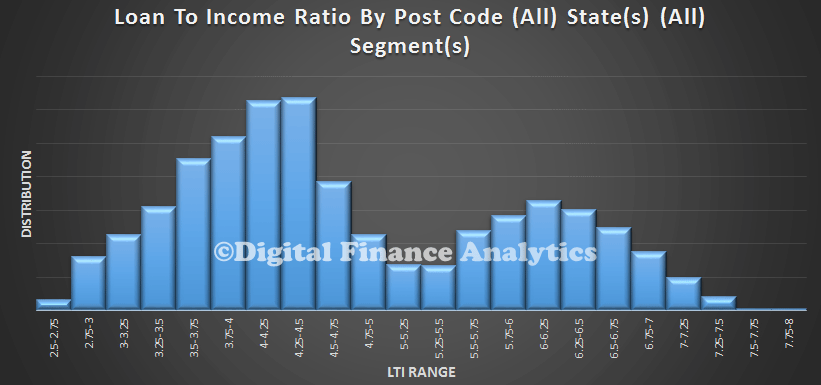 Now, we can break the data out by state, and household segment, using the DFA survey data. The state specific data for NSW largely mirrors the national average.
Now, we can break the data out by state, and household segment, using the DFA survey data. The state specific data for NSW largely mirrors the national average.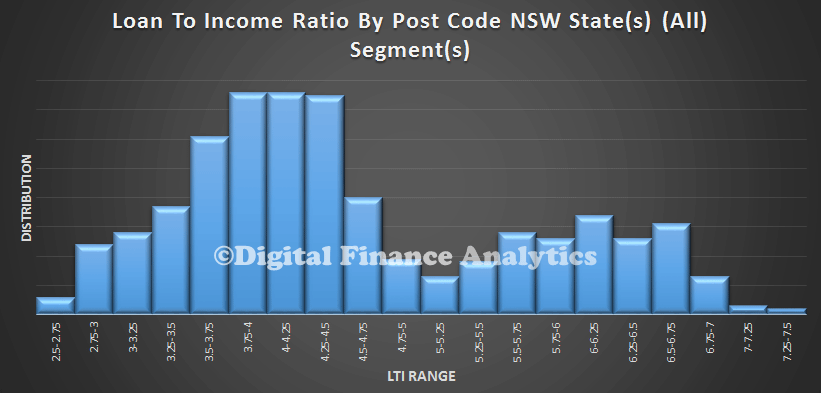 However, looking at TAS, we see some interesting variations. There the LTI’s are higher, reflecting lower incomes relative to somewhat lower house prices. We have adjusted the sample to take account of the smaller populations.
However, looking at TAS, we see some interesting variations. There the LTI’s are higher, reflecting lower incomes relative to somewhat lower house prices. We have adjusted the sample to take account of the smaller populations.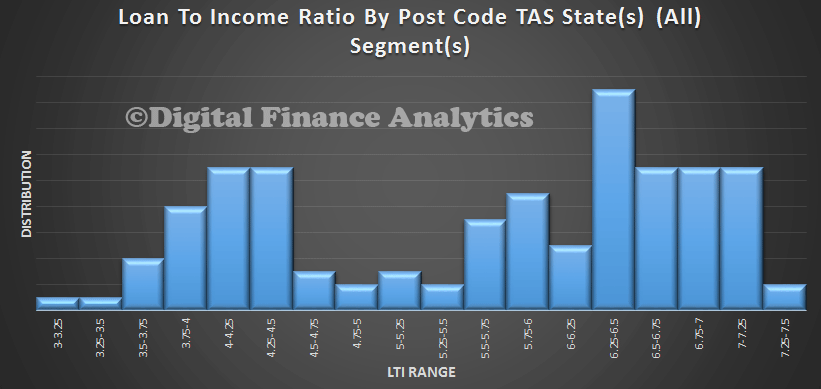
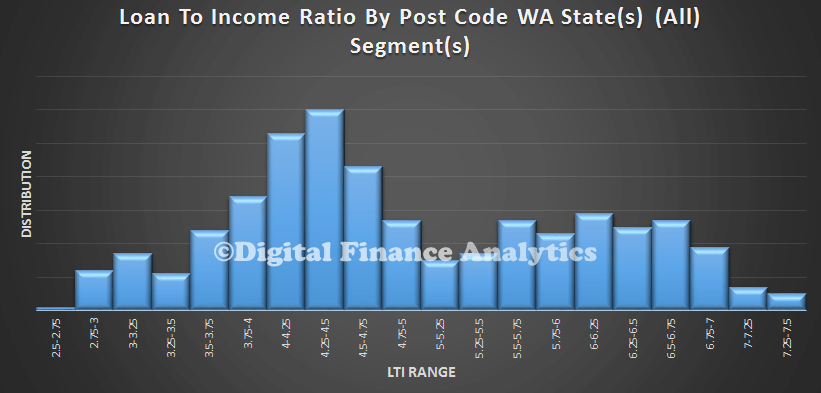 QLD shows greater concentration at lower LTI’s but then a second smaller peak at the upper end.
QLD shows greater concentration at lower LTI’s but then a second smaller peak at the upper end.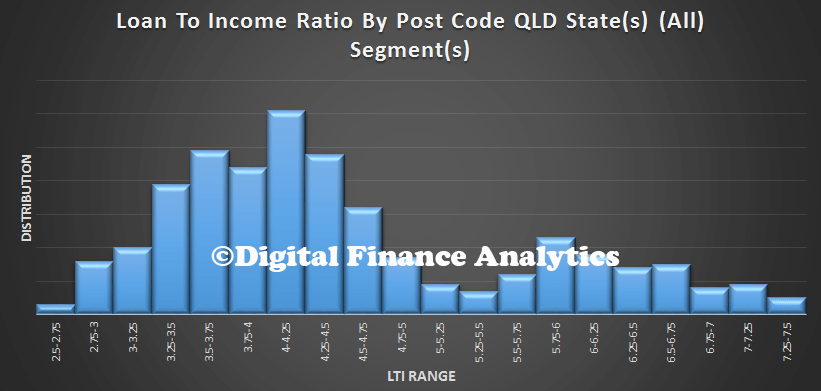 SA has quite a spike around 4.5 times, and a second peak around 6.5, again reflecting lower income levels in that state.
SA has quite a spike around 4.5 times, and a second peak around 6.5, again reflecting lower income levels in that state.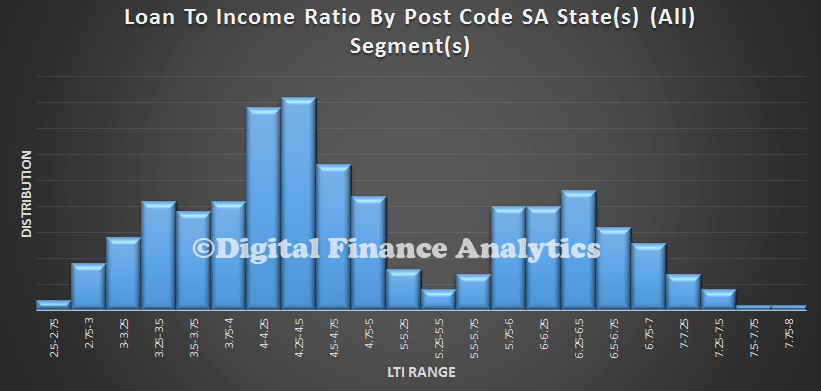 If we then start to look at segments, we find that affluent group, Exclusive Professionals, has a consistently lower LTI, compared with…
If we then start to look at segments, we find that affluent group, Exclusive Professionals, has a consistently lower LTI, compared with…